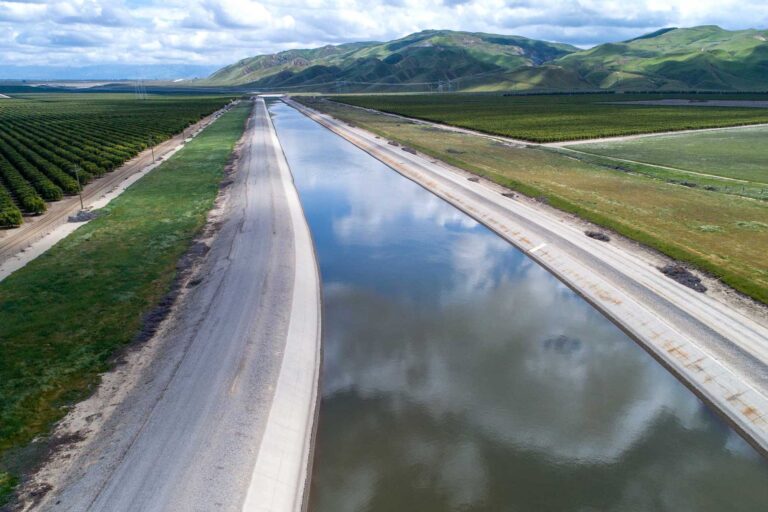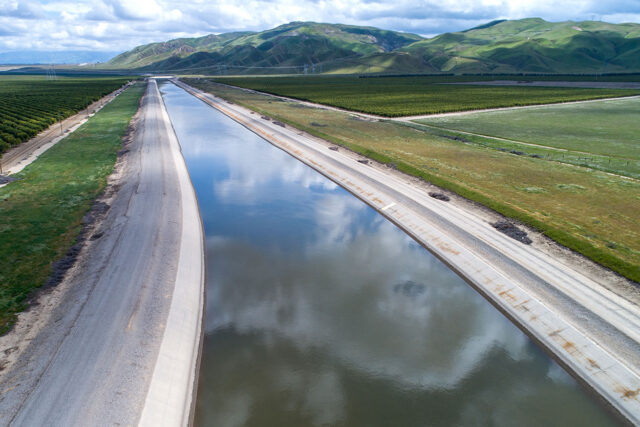Moving from competition to cooperation can help solve water problems facing farms in the San Joaquin Valley and cities in Southern California, and better prepare both for a changing climate. At a virtual event last week, PPIC research fellow Alvar Escriva-Bou summarized a new PPIC report showing how cooperative investments in new supplies and water-sharing agreements can help address both regions’ needs.
While the two regions face very different water challenges—addressing groundwater sustainability in the San Joaquin Valley, and managing drought in Southern California—these are “complementary water problems” said Escriva-Bou. He described different types of partnerships that could meet the needs of both cities and farms, while building resilience into the state’s water system. The State Water Project, which connects much of the state with an extensive water delivery system, “is key to success” for making these partnerships work.
A panel of experts moderated by Robert Wilkinson—an adjunct professor at UC Santa Barbara’s Bren School of Environmental Science and Management, and a co-author of the new report—discussed how to put this approach into practice.
Emmy Cattani, a fifth-generation farmer in the San Joaquin Valley, said, “One of the main benefits [of partnerships] for the agricultural sector is to minimize the amount of land that needs to be taken out of production as a result of the Sustainable Groundwater Management Act (SGMA).” Such partnerships can directly provide additional water for use by farmers, as well as reducing the cost of new infrastructure needed to share water more widely and move it to storage areas.
Joe Yun of the California Water Commission said that freshwater ecosystems can also benefit from urban-agricultural water partnerships. Water projects that seek state support often need to show that they bring public benefits—such as flood protection, water quality improvements, or ecosystem restoration. “To do multi-benefit projects, you need partners. Having [environmental groups] in the conversation early helps—I don’t think ecosystem benefits can be easily tacked on.”
A key next step for developing more partnerships is leadership from local water agencies and groundwater sustainability agencies, Cattani noted. And, said Deven Upadhyay of Metropolitan of Southern California, “We need to find a tent we can all get under and have these discussions.”
All panelists commented on the need for good data and accounting, to show how much water is being used and banked for later use—key to building trust among partners. “The more that we know about the water that’s moving, whether for urban or farm use or the environment, the better decisions we’re going to make,” said Upadhyay.
We invite you to watch the event video.




